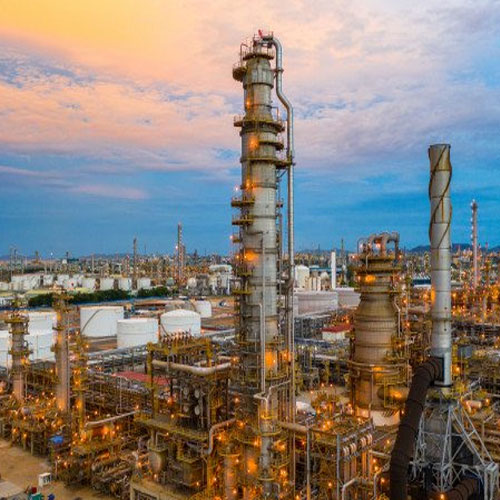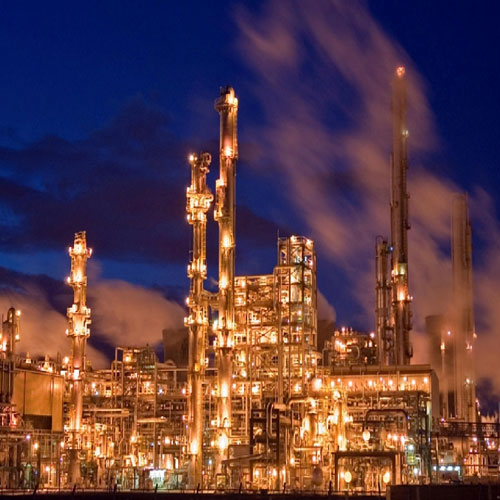Crude oil distillation
Once crude oil comes out of earth, it is in raw state and cannot be used directly in any way. It must be refined into usable products. Depending on the type of crude oil, it is treated by different refining processes to turn into many useful end products. Mainly these products are fuel, lubricating oil, waxes, chemical plastics and many other products used every day in modern societies.
The refining process takes place in 3 steps to change the crude oil into finished products. The first process is to separate the crude oil into its naturally occurring components. This is known as separation and is accomplished by applying heat through the process called distillation. To simplify the process, we consider one tower where distillation process is taking place.
Distillation performed on a laboratory where crude oil is heated and it becomes the crude oil mixture. This mixture fed into the bottom section of the tower, which has the hottest temperature and can be as high as 400 centigrade degree. Components that are vapor go at the top of the tower and the temperature decreases as the vapors rise.
Products from the distillation range from gasses at the top to very heavy viscous liquids at the bottom. In all cases these product streams are considered unfinished and require more processing to become useful products.
Oil distillation in crude oil refinement
Distillation which is done in a tower called distillation column, is the most important step to refine crude oil. These towers include two types:
- Atmospheric distillation column
The crude oil is first removed from any salts. Next, the crude oil passes through a number of heat converters to transfer the heat from the products to the incoming crude oil. At this step, crude oil must enter to the furnace for complete heating. The crude oil is formed in a two-phase, combination of liquid and vapor phase.
Heavy fractions remain on the bottom and light fractions come on the top of the cylinder of the distillation tower. Usually, along with each cut of oil, some lighter fractions are removed from the distillation tower.
- Vacuum distillation column
Some heavy fractions remain from atmospheric distillation tower which have high boiling point. The fractions enter furnace and some water vapor is injected to make more fluid.

Types of distillation
- Simple distillation
It involves heating the liquid mixture to the boiling point.
- Fractional distillation
It is used to separate mixtures of liquid that have similar boiling point. It also involves several vaporization-condensation steps which is called rectification. When heated, the liquid mixture is converted into vapor, vapor becomes cool and condenses and this cycle takes place again and again and purity of the distillate improves with every cycle.
- Steam distillation
It is used to separate heat-sensitive components in a mixture by passing steam through the mixture to vaporize some of it.
- Vacuum distillation
It is ideal for separating mixtures of liquids with very high boiling points.
- Zone distillation
It involves the partial melting of a substance and condensation of the resulting vapors to obtain a pure distillate.
Aim of crude oil distillation animation
In this animation, we show separation technique that is used to increase the concentration of a particular components is the mixture and also to pure components from the mixture.

